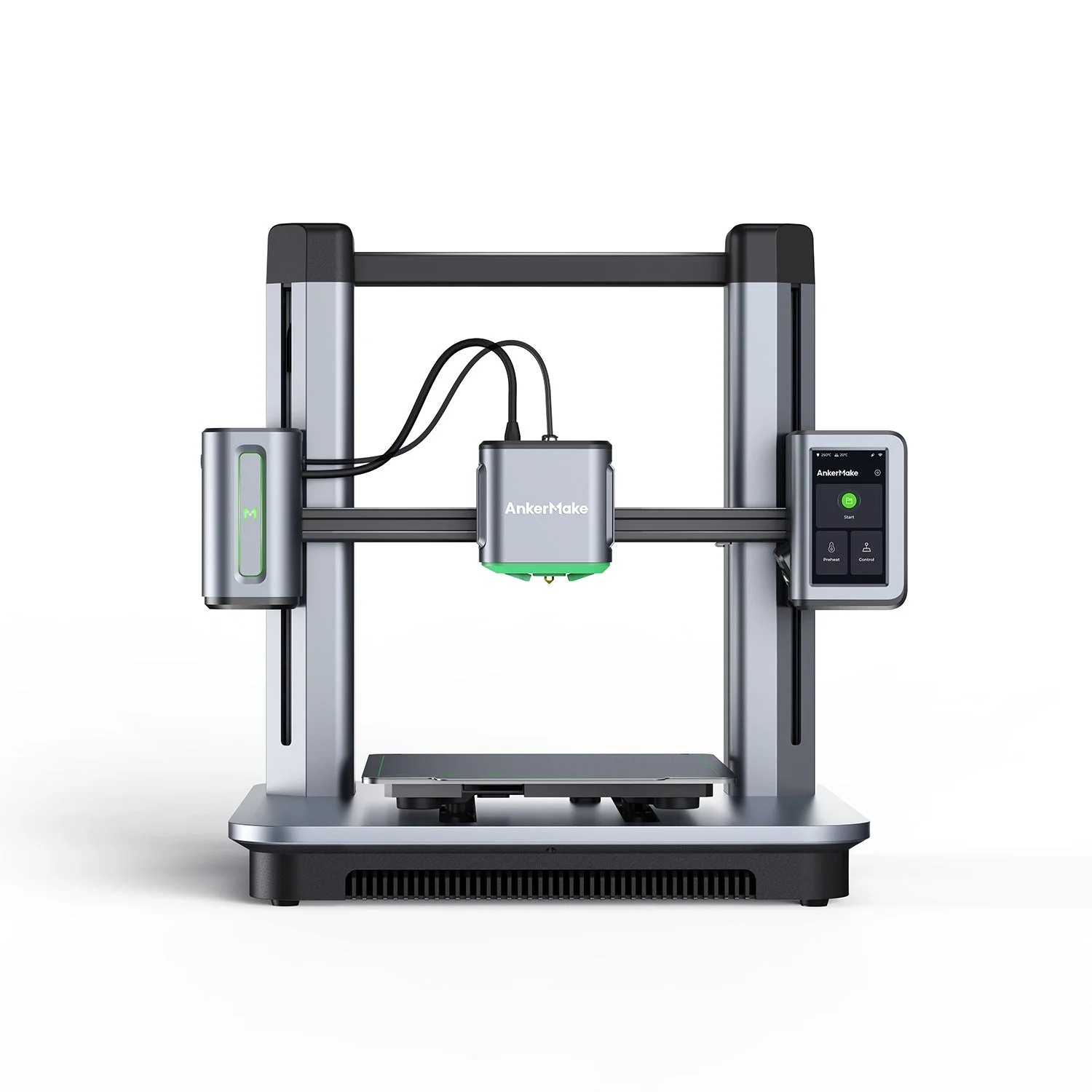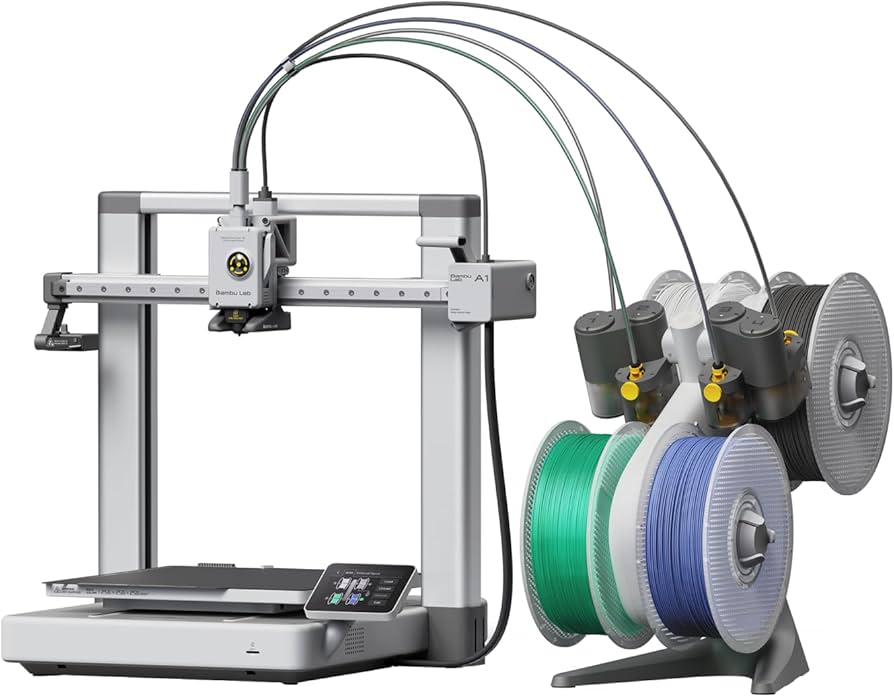Compare M5 vs A1
Comparison between the best 3D printers
Choose the best 3D printer at the best price. The cheapest 3D printers are here.
Buy a 3D printer here with 3D Fila.
 |
 |
|
| Model | M5 |
A1[BUY A1] |
| Printing Material | Filament | Filament |
| Buy Filament for AnkerMake M5 | Buy Filament forBambu Lab A1 | |
| Estimated price | $497,00 | $700,00 |
| Manufacturer | AnkerMake | Bambu Lab |
| Release Year | 2023 | 2023 |
| Print Volume [mm] | 235x235x250 | 256x256x256 |
| Printer Size [mm] | 502x438x470 | 385x410x430 |
| Weight [kg] | 12,6 | 8,3 |
| Power Loss Recovery | YES | YES |
| Enclosed printer | NO | NO |
| Bed Leveling | Automatic | Automatic |
| Filament End Sensor | YES | YES |
| Bed type | Heated | Heated |
| Power supply system | Direct Drive | Direct Drive |
| Standard nozzle | 0,4 | 0,4 |
| Maximum Nozzle Temperature [°C] | 260 | 300 |
| Maximum Bed Temperature [°C] | 100 | 100 |
| Maximum printing speed [mm/s] | 500 | 500 |
| Filament holder | YES | YES |
| Camera for supervision | YES | YES |
| Recommended filaments | PLA, PETG, ABS | PLA, PETG, TPU, PVA |
| Recommended slicers | AnkerMake Studio (macOS, Windows), Simplify3D, Ultimaker Cura, PrusaSlicer | SuperSlicer, PrusaSlicer, Cura, OrcaSlicer |
| Maximum Resolution [mm] | 0,1 | 0,1 |
| Processor | ||
| Display | Touchscreen 4,3'' | Touchscreen 3,5 |
| Power Supply | 350 W | 350 W |
| Connectivity | Wi-Fi, USB-C, OTA Upgrade | Wi-Fi, Bambu-Bus, Cartão Micro SD |
| Operating systems | Windows, Linux, Macbook | Windows, Linux, Macbook |
| Date of registration in the system | 2024-07-08 | 2024-07-17 |
| Release date | 2023 | 2023 |
| Extra features | The AnkerMake M5 printer stands out for its impressive print speed, reaching up to 500mm/s. It features AI print monitoring, an integrated camera for creating timelapses, auto-leveling bed with pressure sensor, direct extruder, flexible PEI-coated build plate, and Wi-Fi and USB-C connectivity. Assembly is quick and easy, and the printer is designed to deliver high print quality and ease of use. | The BambuLab A1 printer features fully automatic calibration, multi-color printing with the AMS system, active flow rate compensation, quick nozzle change with a clip, active motor noise cancellation, a build volume of 256x256x256 mm³, a maximum extruder temperature of 300°C, and a heated bed of up to 100°C. In addition, it has high precision, a machine health management system and an intuitive 3.5-inch touchscreen interface. |
| Support for multiple colors and materials (AMS and CFS) | NO | YES |
Notes * |
||
| Cost-benefit | 7 / 10 | 7 / 10 |
| Hardware | 4 / 10 | 4.8 / 10 |
| Tela | . | . |
| Print volume | 3 / 10 | 4 / 10 |
| Performance | 4 / 10 | 4 / 10 |
| [BUY A1] |
Conclusion |
| In conclusion, both the AnkerMake M5 and the Bambu Lab A1 are robust 3D printers that cater to different user needs while offering a competitive cost-benefit ratio. The AnkerMake M5 excels with its remarkable print speed and user-friendly features such as AI monitoring and easy assembly, making it an ideal choice for those who prioritize speed and ease of use. However, it lacks the capability for multi-color printing, which may be a drawback for users looking to work with more complex designs. On the other hand, the Bambu Lab A1 showcases advanced features like automatic calibration and multi-color printing capability, which enhances its versatility and precision. While it has a slightly larger print volume and supports a wider range of materials, it comes at a higher price point. Ultimately, the choice between these two printers may hinge on specific user preferences: if speed and simplicity are paramount, the AnkerMake M5 is the better option; if versatility and advanced features are more desirable, the Bambu Lab A1 is worth the investment. Both models are suited for enthusiasts and professionals alike, ensuring high-quality printing in their respective capacities. |

